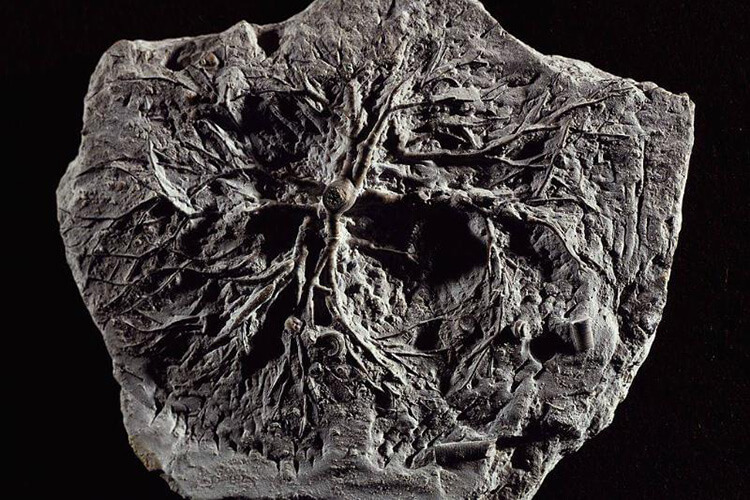
Advertisements
In a desolate region of Arctic Circle, over 200 miles from the nearest city, stands the ruins of an abandoned Soviet research station. There, one can find an astonishing discovery: the deepest hole in the world. Over the past few decades, scientists have used the hole to try and accomplish the unthinkable: drill to the center of the Earth.
As the engineers worked, terrifying rumors began cropping up, like that the team discovered a portal to Hell itself! Soon enough, the team would make a startling discovery that would force the scientific team to shut down and seal the experiment forever!
What Lies Beneath
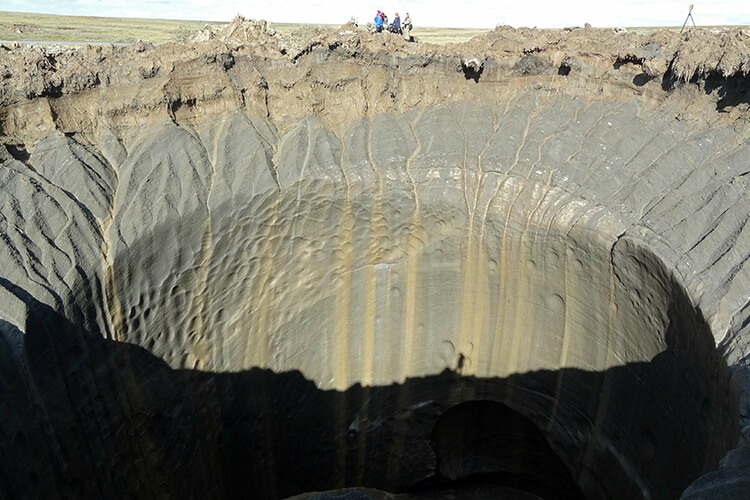 Vasily Bogoyavlensky
Vasily BogoyavlenskySince the very beginnings of civilization, humans have been fascinated by what lies below the Earth’s surface. Some wondered if it contained monsters, forgotten people, or secret gateways to the underworld. Of course, these days, it just seems like everyone wants to get to Mars. But, as we continue to stare up at the night sky with wonder, many overlook the incredible, mysterious phenomena found right here at home, including the deepest hole in the world!
Believe it or not, some scientists believe that our knowledge of outer space is actually greater than our understanding of what hides beneath Earth’s surface. And while many know about the space race and our desire to colonize other planets, few remember the equally fascinating battle to conquer the subterranean world…
In The Barren North
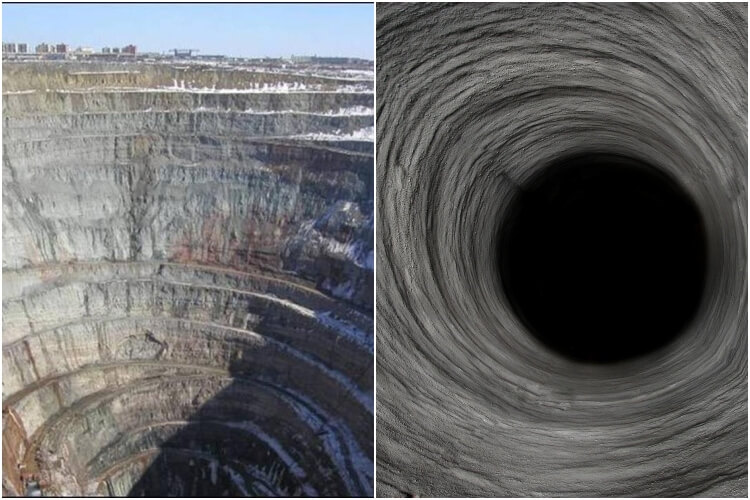 Maternity Week, Explored Planet
Maternity Week, Explored PlanetDuring the Cold War, many countries were trying to find a way to dig deep into the Earth. After all, hiding underground was the only viable way to survive a nuclear war! Not only that, but digging to the Earth’s center guaranteed new scientific discoveries and opportunities to those who could.
To keep their own project a secret, the Soviets needed to find an incredibly remote location. Eventually, they settled on the uninhabitable Kola Peninsula in the Arctic Circle. Not only was the location hundreds of miles from the nearest city, but the research team also found a deep, natural hole there. The hole would jump-start their dig! Amidst the ice, the group began plans to start the project, never knowing that they would soon make a discovery that would change the world forever…
What The Soviets Were Looking For
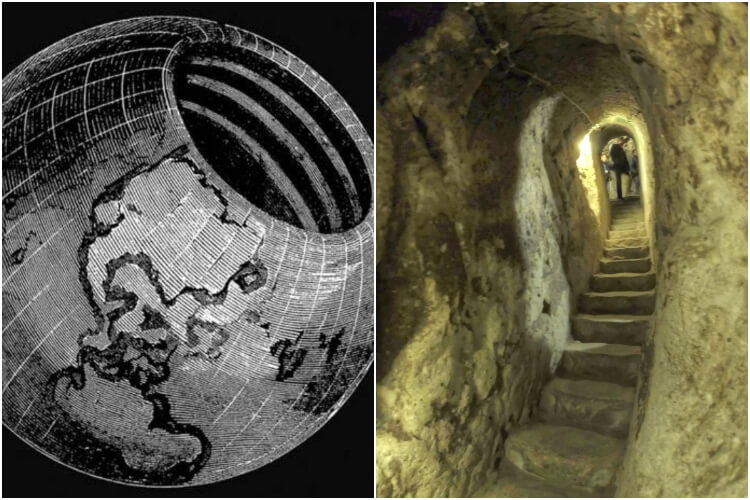 History Channel, Wikimedia Commons
History Channel, Wikimedia CommonsToday, most believe what the history books say: the Russians started their project as a part of the scientific arms race of the Cold War. However, some think that there were other reasons Russia wanted to dig down to the center of the Earth.
Some historians maintain that the Soviets wanted to prove that the Earth was hollow, filled with monsters and forgotten civilizations. Others believe the rumors that Russia had developed secret plans to build a massive city underground. Regardless of why the Soviets started digging in the desolate Kola Peninsula, no one could have predicted what they would find underground…
The Dig Begins
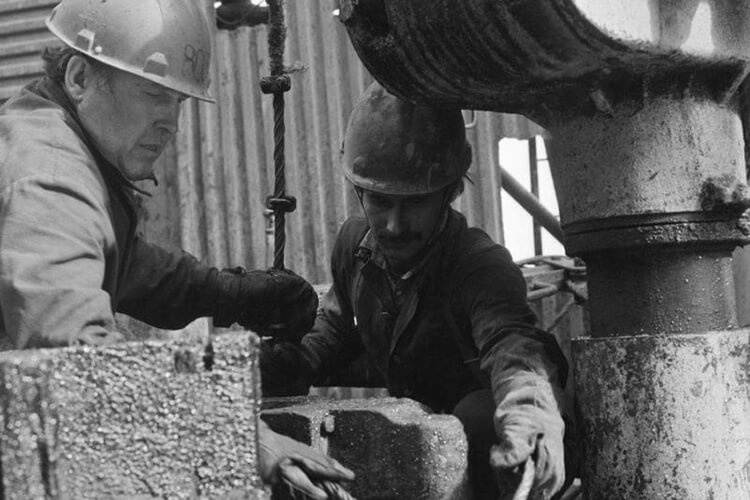 Explored Planet
Explored PlanetBefore reaching the core, the Soviets first aimed to reach a depth of at least 49,000 feet, far deeper than anyone had dug before. The dig began in earnest in 1965, by which time the team had named their project “The Kola Borehole.” Engineers use the term “borehole” for any type of exploratory hole drilled as part of a geological investigation. After the dig began, researchers started digging more boreholes, which forked off from the central vein.
This technique meant that the Russians had to move slowly through the digging process, as the side boreholes provided invaluable data and stabilized the central hole. As other countries stopped their deep hole digs, the Soviet Union soldiered on. And, soon enough, the Kola Borehole smashed a world record!
World Record Broken
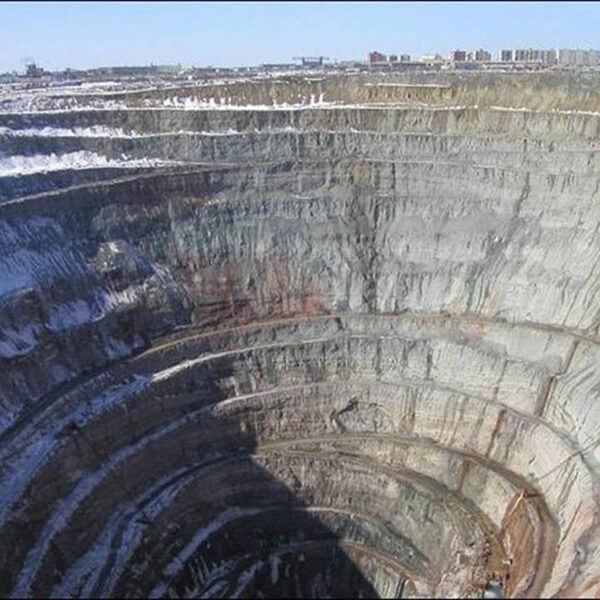 Maternity Week
Maternity WeekAfter years and years of digging, on June 6, 1979, one of the Kola Borehole’s side tunnels, one dubbed SG-3, broke the world record for the deepest artificial hole dug. Previously, the oil dig known as Berth Rogers Hole in Oklahoma held the record at 31,440 feet. However, on the day in 1979, the team in SG-3 dug to 31,441 feet beneath the Earth’s surface.
Believe it or not, this is just the beginning of the incredible tale of the Kola Borehole and the team behind it. Less than a decade after the Kola Borehole team broke the world record, in 1983, they had managed to dig to a depth of 39,000 feet! It was that this point that geological started to make unique, and dangerous, discoveries…
Boiling Mud
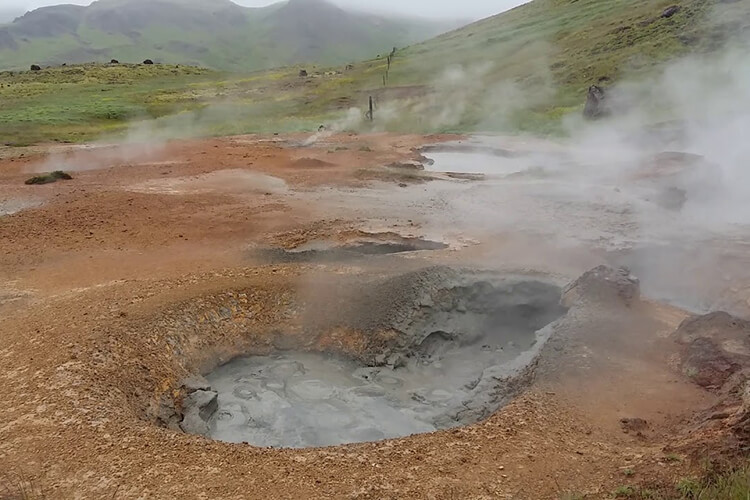 Reddit
RedditOne day, as the Soviet Team continued to slowly dig further and further into the Earth, they began receiving strange readings from their equipment. As it turns out, mud had started to flood the hole. But not just any type of mud. Instead, mud quite literally “boiling” with hydrogen gas filled a portion of the hole, damaging some equipment. Thankfully, eventually, the mud dissipated.
To this day, scientists are still not entirely sure how hydrogen gas, one of the four essential elements of life, could get so deep underground. But that was still just the beginning of what the Soviet Union would discover inside the Kola Borehole! It was at this point that the Russian government realized they could make some money off the hole.
A Tourist Attraction
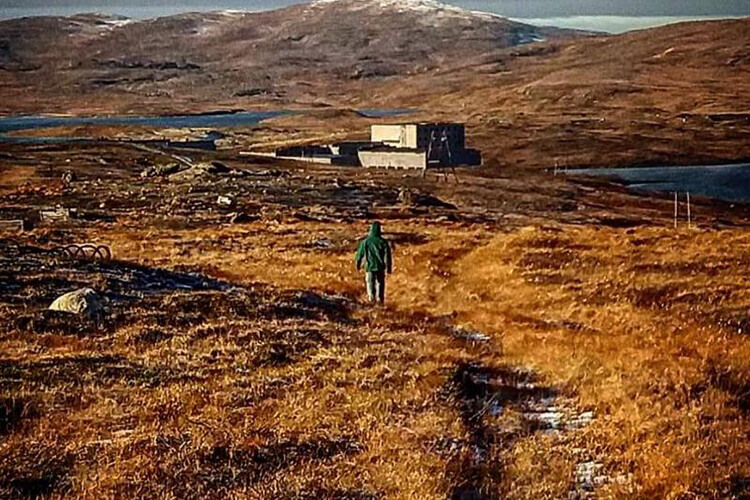 Explored Planet
Explored PlanetBy the early 1980s, oil prices had started to drop, sending the Soviet Union’s economy into a tailspin. So, the government looked to make money any way they could. As a result, for a year, engineers stopped digging deeper into the hole. Instead, they opened it up both to scientists and tourists.
The Soviets had no problem with other scientists coming to the site, as they knew they were unlikely to discover anything they had not. Meanwhile, locals and tourists could pay to visit the site and learn about the extraordinary Kola Borehole from the people that worked there. Sadly, it failed to drum up much business. Ultimately, just a year later, the failing USSR restarted the experiment and began digging once again!
Competition Drives The Team Deeper
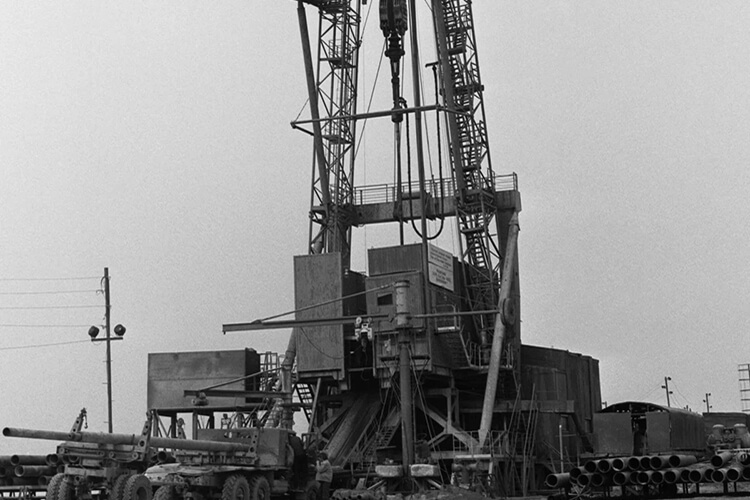 GenK
GenKWhile it has never been confirmed, many believe that the Soviets restarted their dig for another reason: competition from Germany. You see, in the ’80s, the German government also decided to get in on the dig-as-deep-as-possible game. So, they launched the German Continental Deep Drilling Program (GCDDP), pouring more than $733 million in today’s money into digging the world’s deepest hole. That’s right!
So, what did it get them? Well, by the time Germany decided to defund the GCDDP, they had managed to dig just over 6 miles into the Earth’s crust, smashing the previously held record. How incredible! Sadly for them, the Russians would best their record in short time.
Disaster Strikes
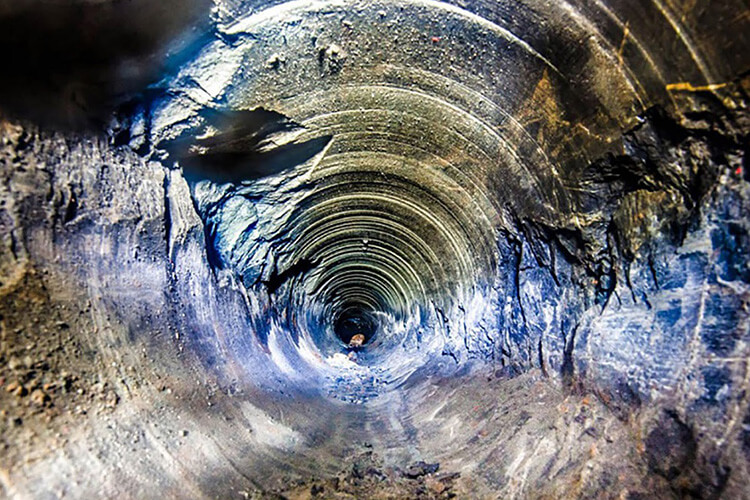 Maternity Week
Maternity WeekIn September 1984, the unthinkable happened. Drilling had resumed just a few days earlier, and everything went slow and steady, just as intended. However, just before hitting the 40,000-foot mark, a section of the drill string started to twist off. While the engineers tried to save it, it was too late. The drill fell off and was left in the hole. Due to the borehole’s size, the team could not retrieve the bit, blocking all future progress. For a time, it seemed the adventure into the Earth would not continue.
Thankfully, the Soviet team’s careful planning paid off. Thanks to their decision to make side boreholes, they managed to restart from another hole, 23,000 feet in depth. By 1989, they had once approached the 40,000-foot mark. While the mistake cost them five years, history would soon be theirs…
Cracking 40,000 Feet
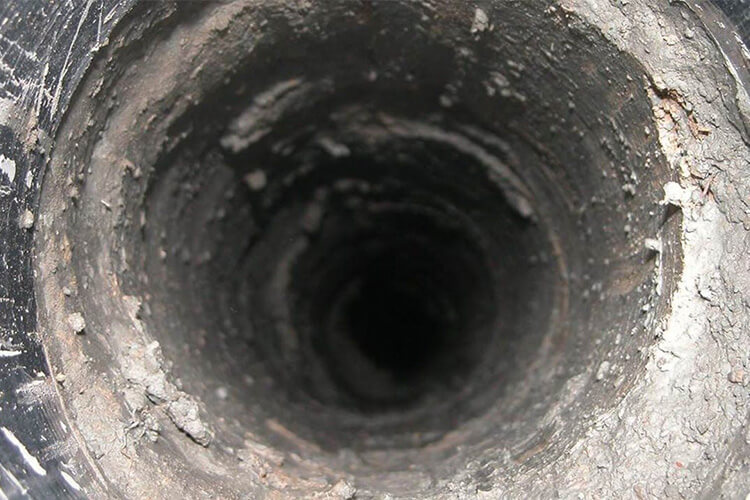 Explored Planet
Explored PlanetAt the end of 1989, the Soviet team at the Kola Borehole cracked open a bottle of champagne. The reason? By the end of that year, the drill team had managed to reach a record 40,230 feet. That’s right! The team had managed to drill 7.5 miles into the Earth. To put that into perspective, that’s 37.8 Eiffel Towers stacked on top of one another. They also renamed the Borehole to the Kola Superdeep Borehole, appropriately.
Encouraged by this incredible feat, higher-ups in the USSR felt optimistic about the project’s future, believing that the Kola Superdeep Borehole would reach its original target of 49,000 feet by the end of 1993. However, all those predictions would soon fly out the window. What the Soviet team found once they cracked 40,000 feet would upend the scientific community!
How Deep It Really Is
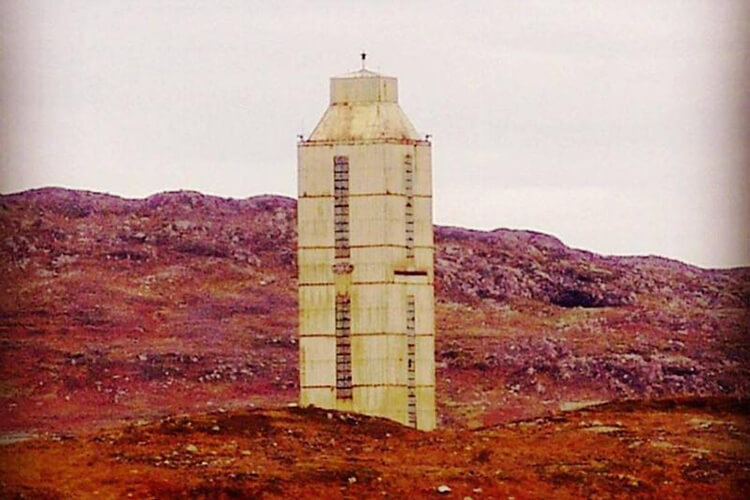 Maternity Week
Maternity WeekIt’s quite challenging for a human to imagine just how far 40,230 feet is. Of course, we can give context, like 7.5 miles, 37.8 Eiffel Towers, 112 football fields, and the like, but the scale still seems impossible. Believe it or not, at this point, the Kola Superdeep Borehole had become deeper than any natural hole found on Earth. The deepest location on Earth, the southern end of the Mariana Trench, comes in at just 36,037 feet.
While the depth of the Kola Superdeep Borehole will always be a tad hard to grasp, this might help: if you were to fall the heigh of the Kola Borehole, it would take you four full minutes. That’s right!
Things Started To Heat Up
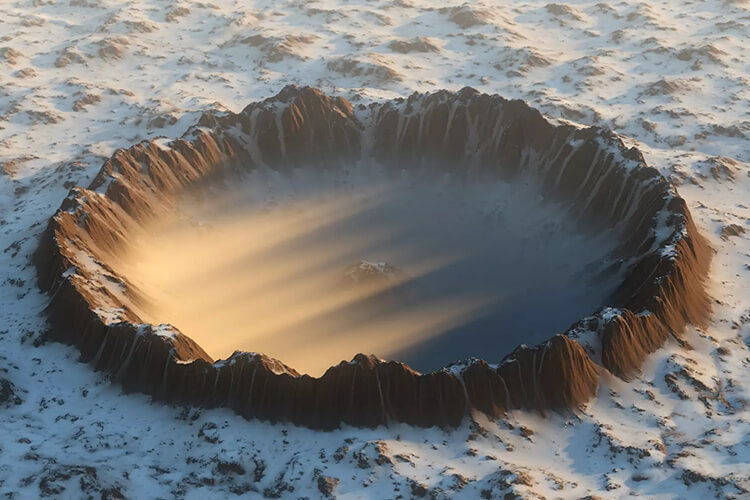 Explored Planet
Explored PlanetThe first thing that scientists noticed after breaking 40,000 feet was that things started to heat up, literally and quickly. While the team had expected things to become hotter as they bore closer to the Earth’s core, the bottom of the hole reached a whopping 356 °F, a full 176 °F hotter than the engineers had calculated. That’s hot enough to liquefy nearly any creature instantly!
Soon, the Soviet team’s drills could barely handle the heat. However, surprisingly, it did not seem to affect the rock in the way it should have. The Russian geologists were about to have their fundamental understanding of the world shaken…
Moving Rock
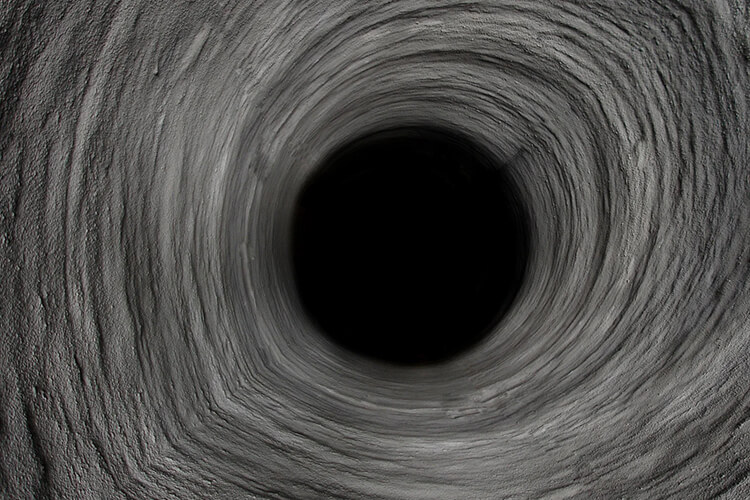 Maternity Week
Maternity WeekWhile the drastic increase in temperature certainly surprised the scientists, nothing could prepare them for what they would find next. The Soviet geologists also discovered that rock at depths past 40,000 feet was considerably less dense than they had original predicted. In fact, the high temperatures actually caused the rock to behave somewhat like a thick plastic.
In light of this discovery, the team would need to devise a new way to drill deeper towards their goal. But even as they waited, their findings were far from over! The scientists would find much more before their job was done. Meanwhile, strange rumors about the project began to crop up with the few locals that lived near the Kola Superdeep Borehole…
A Hole to Hell?
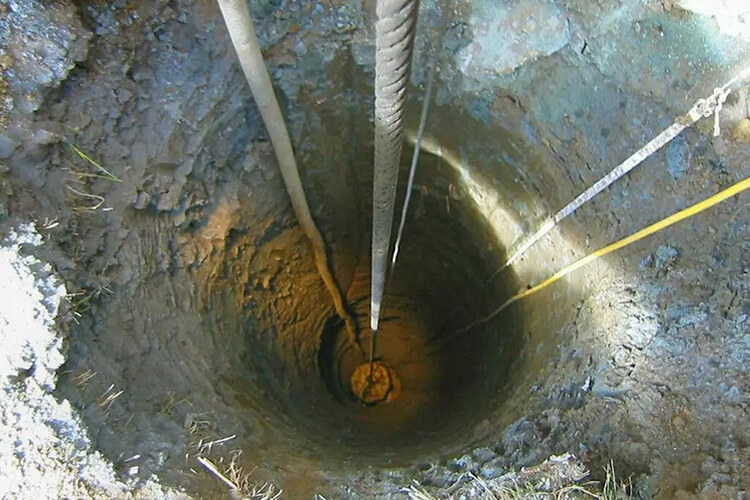 Explored Planet
Explored PlanetAs soon as word of the temperature increase started to leak from the Kola Superdeep Borehole, rumors began to propagate all around Russia. Now, a common Russia legend holes that the team actually burst into a massive cave system after hitting 40,000 feet deep. In intrigued, the legend says that they lowered down a microphone and captured the unbelievable: the sounds of human screams and roaring flames.
Of course, the Russian government has, to this day, completely denied the story, labeling it as entirely false. However, that has not stopped many from believing it. While definitive proof of the story has never emerged, what the Soviet scientists discovered next should have put the rumors to bed for good…
Another Component For Life
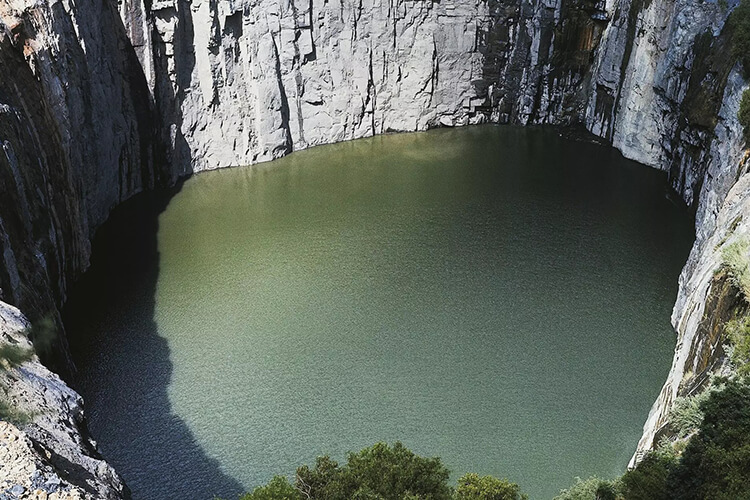 Maternity Week
Maternity WeekAmazingly, at these incredible depths, the team found flowing water, at depths that no scientist had ever predicted before. Of course, that makes it pretty hard for there to be flames and screaming people down there! But it did strike the scientists as incredibly strange: even at these incredible depths two of the four major components of life, water and hydrogen, existed.
Currently, scientists believe that the water comes from the intense pressure of planet Earth, forcing oxygen and hydrogen out of the rock, creating water. Even though many of the components of life were found at these depths, geologists and biologists never believed anything could live that far underground. At least not until the Soviet team’s next, and most important, discovery.
Life Found
 Explored Planet
Explored PlanetIf you think it’s impossible for something to live 40,000 feet under the Earth’s surface, think again. Believe it or not, at these incredible depths, the Kola Superdeep Borehole team found microscopic plankton fossils! Later, the team estimated that these creatures died nearly 2 billion years ago. So, while nothing might live down there now, it may have a long, long time ago!
You might also think, given everything discovered, the Soviet government would love the project. But following the discovery of the plankton fossils, the USSR ordered the Kola Superdeep Borehole project shutdown! It seems the team would never reach their goal of 49,000 feet. By 1995, everyone on the project had been assigned to other places or departments. However, soon enough, research began again and more secrets began rising to the surface…
Research Continues Today
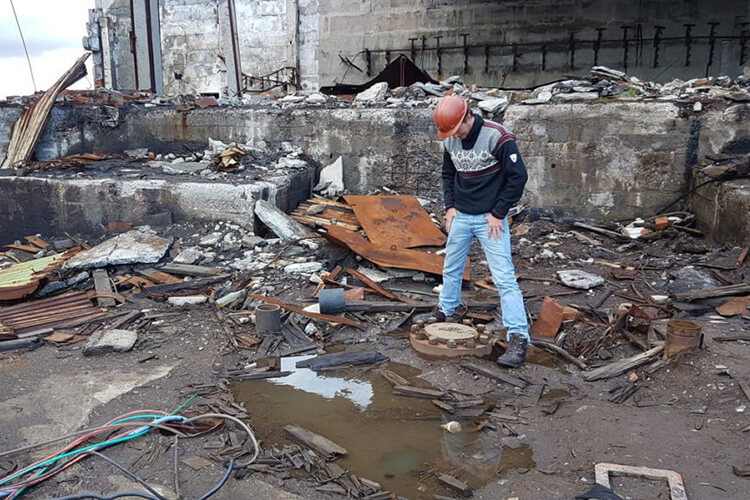 Explored Planet
Explored PlanetThanks to the exciting research done in the deepest parts of the Kola Superdeep Borehole, scientists late managed to disprove a long-held belief about the composition of the Earth’s crust. You see, for many years, by measuring seismic waves, most geologists predicted that the rock underneath our feet changes from granite to basalt somewhere around three miles beneath the surface.
However, by closely examining the data recovered by the Soviet team, scientists soon learned this was not the case. At least not underneath the Kola Peninsula! Once again, even after closing, the Kola Superdeep Borehole would have a massive impact on the geological world. And the surprising discoveries continue today!
Better Understanding the Earth
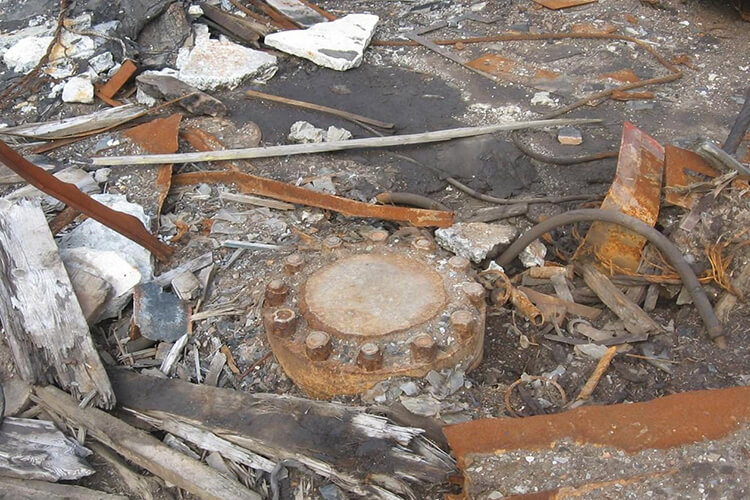 Maternity Week
Maternity WeekTaking a close look at the data that the Soviet team pulled while deep underground, researchers realized that the group had found only granite, no basalt, even at the deepest points of the Kola Superdeep Borehole! While it would take a few more years of testing and research, the information kicked off a firestorm of scientific investigations.
Eventually, geologists worldwide concluded that the original idea on the change in seismic waves had been wrong. Rather than granite shifting to basalt, the change in seismic waves is actually a result of metamorphic differences in the rock! And this is just one of the many values of the Kola Superdeep Borehole to today’s scientific minds.
The Value of the Hole
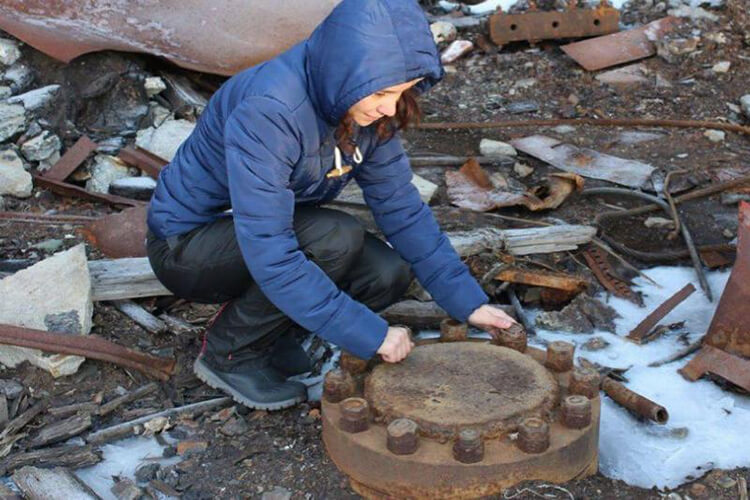 Explored Planet
Explored PlanetYou might think that since the Kola Superdeep Borehole is now closed that it’s worthless. However, that’s simply not true. The data the Soviet team pulled from the dig remains as valuable as ever.
As geologist Benjamin Andrews explained, “If we have a better knowledge of what the mantle is and how the mantle behaves, we have better knowledge of volcanoes and earthquakes, and better knowledge of how the planet as a whole works.” That’s why the hole in Kola remains so important, even today. So it probably comes as no surprise that the scientific community is divided about what to do with the superdeep hole now…
What To Do About The Kola Superdeep Borehole
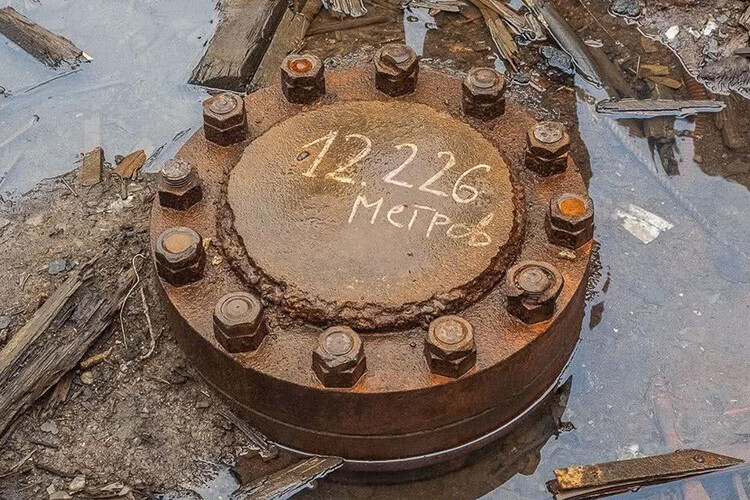 Maternity Week
Maternity WeekTwo things led Russia to shutdown the Kola Superdeep Borehole in 1992. First, the high temperatures and strange, unpredictable rock made all drilling equipment at that time useless. No matter what they tried, the team’s equipment could not survive under the conditions. With that information, the higher-ups decide to shut down the mission.
Meanwhile, as many historians have pointed out, the Kola Superdeep Borehole’s closure nearly perfectly times with the fall of the Soviet Union. However, the USSR had one final project for the team behind the world’s deepest hole…
The Site Today
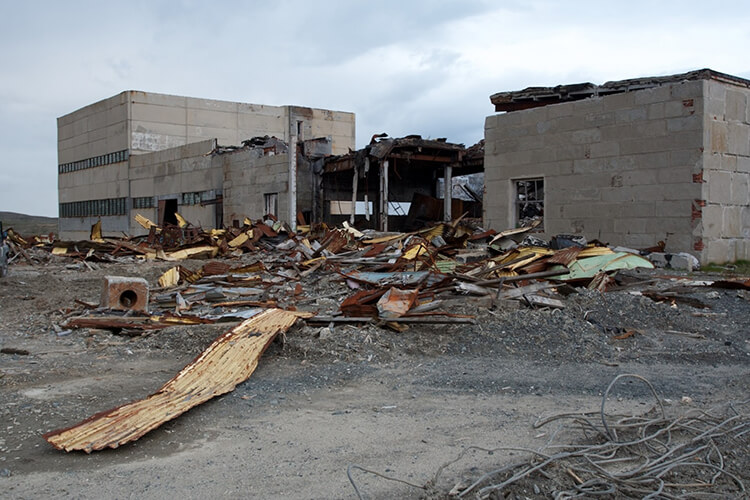 Maternity Week
Maternity WeekSadly, after the Russian government shut down the project, they made sure to ruin any other scientists’ chance at collecting new information. The dissolving USSR ordered the Kola Superdeep Borehole partially filled with cement and sealed it with a tight metal lid. They also flagged the site as an environmental hazard and made it illegal to visit. Should you ever find yourself in the remote area of the Kola Peninsula, it’s best to follow local laws and stay away.
While the Superdeep Borehole was once the deepest manmade hole globally, its record has since been broken! In fact, one record-breaker eventually reached the original goal of the Soviet team: 49,000 feet deep…
Record Broken
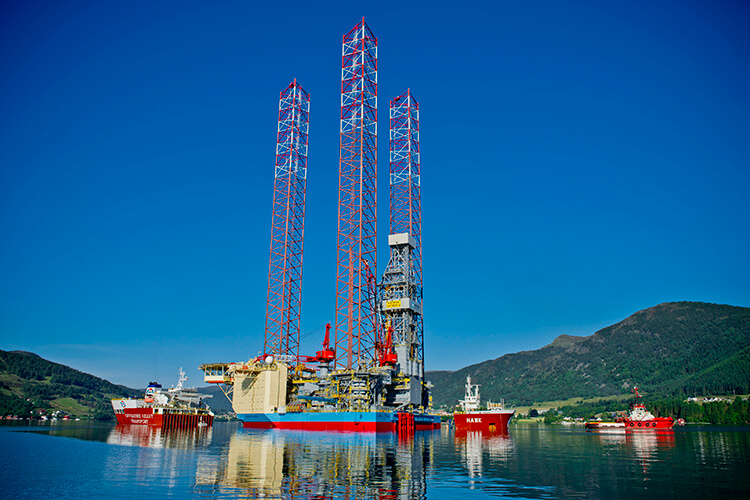 Wikimedia Commons
Wikimedia CommonsFor nearly 20 years, the Kola Superdeep Borehole’s record dig went unbroken. However, as always, things eventually changed. In 1994, Maersk Oil Qatar AS of Denmark started digging in the Al Shaheen Oil Field in the Persian Gulf. Of course, at the time, they had no idea they would eventually dig the deepest well – or anything, for that matter – ever.
Then, in May 2008, Maersk Oil drilled the world record for a well. The company managed to drill the well, incident-free, to a new world record of 40,320 ft, 90 feet more than the Kola team. Still, the Maersk Oilwell has provided us with little geological information. And, soon enough, it would be beaten once again. This time by a Russian team, no less!
Smashed Once Again
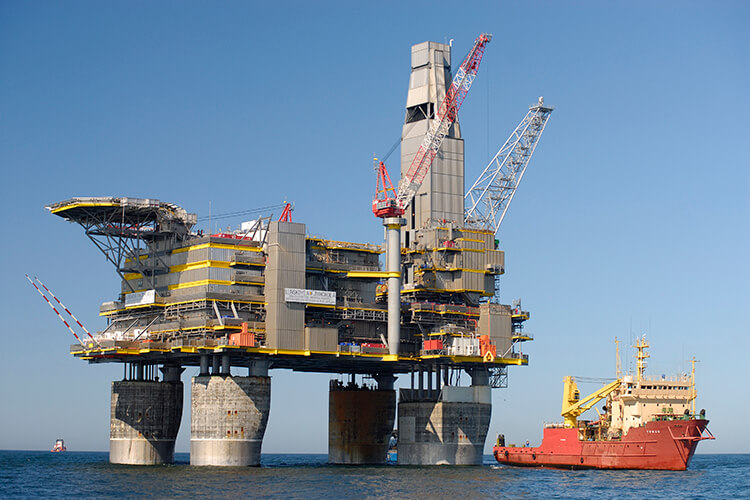 Wikimedia Commons
Wikimedia CommonsEventually, a Russian team would manage to dig their way down to 49,000 feet, though it wasn’t the Kola Superdeep Borehole team, of course. In 1996, the Russian Federation and the Sakhalin government started a joint oil consortium off of Russia, run operated by Exxon Neftegas Limited. Since the first well was dug in 2003, 10 record-breaking wells have been drilled in this area.
Most recently, in November 2017, a new well in the area broke the old record, coming in at 49,000 feet. Finally, it had been done, some seven decades after the Soviet Union put forth their initial goal. But scientists still have a long way to go…
Long Way To Go
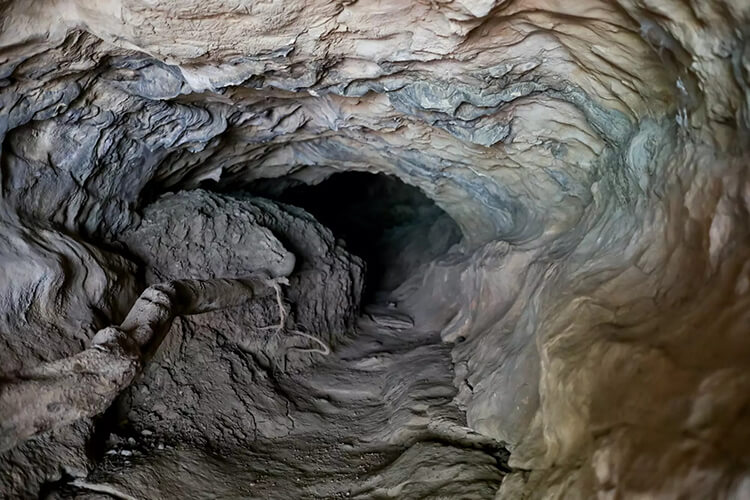 Materinty Week
Materinty WeekSure, the Kola Superdeep Borehole and the record-breaking wells seem deep – and they are. We’ve already covered just how deep they are! However, to put things in perspective, even though these are incredibly deep holes, they barely scratch the surface of the Earth’s incredible mass.
For those that don’t know, the average distance to the center of the Earth is a whopping 3,959 miles. That’s right! That means even the deepest well, which comes in at just 9.2 miles, has only made it .002% the way to the center of the Earth. But, while scientists don’t expect to dig to the center of the Earth anytime soon, they are still trying to go deeper!
Digging Deeper Than The Kola Superdeep Borehole
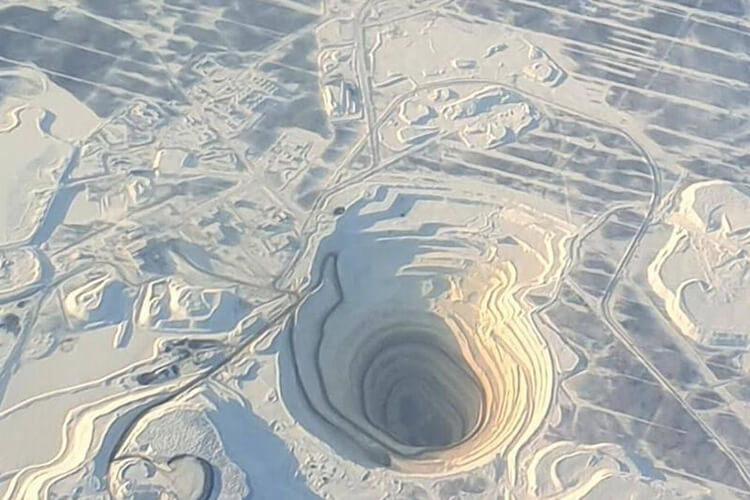 Explored Planet
Explored PlanetAs many of the deepest holes in the world are oil wells, and therefore give scientists little to no data about the Earth, many are trying to start another project like the Kola Superdeep Borehole. After all, there’s still so much to learn right here on Earth!
Any geologist can tell you: it’s much easier to drill down into certain parts of the planet than others. For instance, the floor under the ocean is not only already deeper than land, but also often much less dense. That’s why so many oil companies drill in the sea! So why not drill under the ocean? Well, that’s exactly what some scientists are thinking.
Drilling Under The Ocean
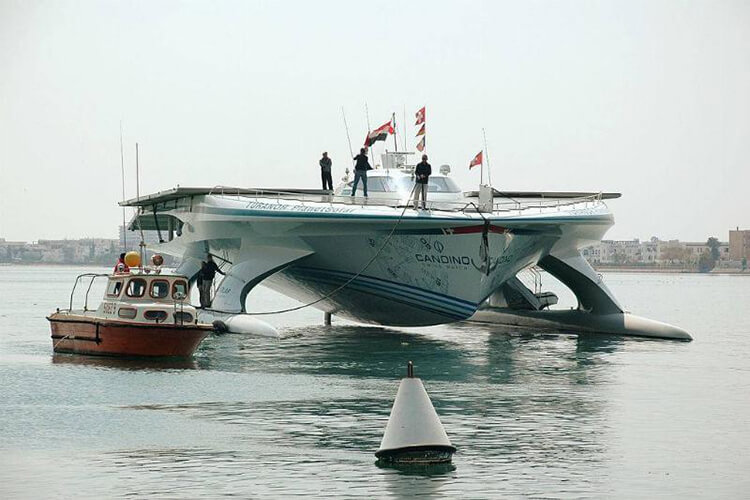 Materinty Week
Materinty WeekIn 2016, the Woods Hole Oceanographic Institution, a private, nonprofit research institute in Massachusetts, announced plans to begin drilling to depths never even dreamed of by the Soviet Union. Their dig is taking place in the Atlantis Bank of the Indian Ocean. There, the team located a piece of oceanic that cooler than usual, making things even easier for engineers.
The Woods Hole team plans to drill to the Moho, where the Earth’s crust ends, and the molten mantle begins. “Atlantis Bank makes an ideal target to try to drill to the Moho, the boundary between Earth’s crust and mantle, because there are no upper-crust basalts and dikes to drill through,” the Institute wrote.
The Search Continues
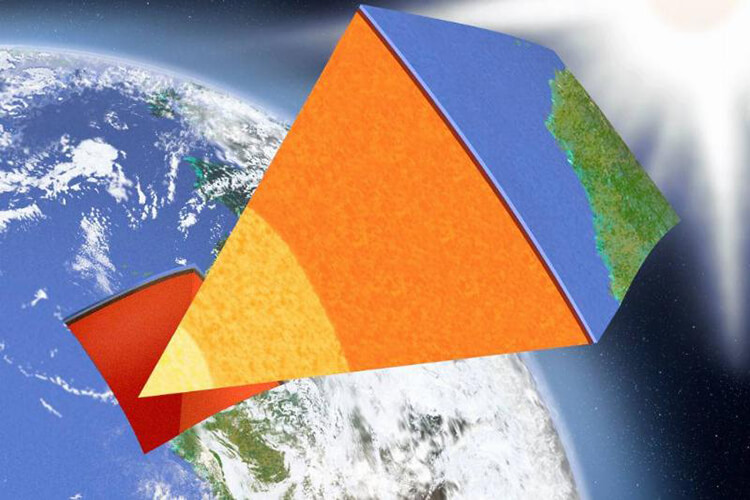 Explored Planet
Explored PlanetToday, the Woods Hole Oceanographic Institution project has been going on for some time. Scientists from various organizations have helped, and the team has stopped and restarted a few times. However, they all remain hopeful that they will find something incredible soon enough and break the world record for the deepest man-dug hole. Only time will tell!
The world waits as well to see what they discover. Who knows, maybe they’ll one day find living creatures down there! Of course, deep underneath the Earth’s surface is not the only place to find amazing discoveries. Just dive beneath the waves of the ocean, and you’re sure to find something incredible, like the dive team from one Canadian college…
Lying On The Bottom of the Ocean
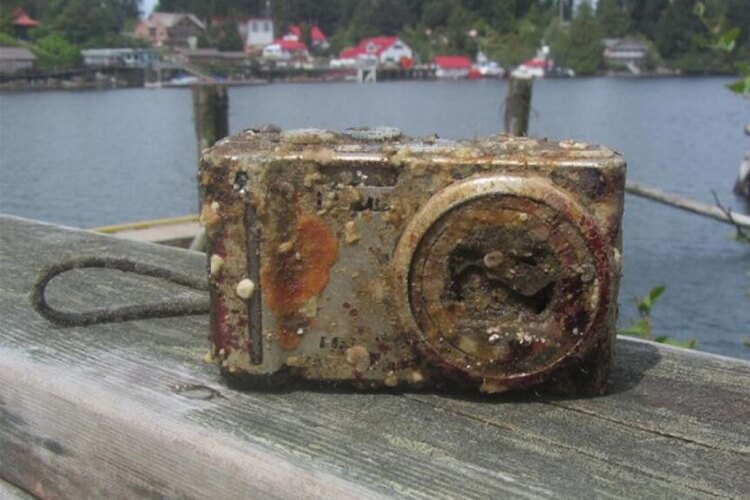 Top5
Top5Losing something incredibly meaningful and important, like a camera or photo album, can feel devastating. Most of the time, there’s no other option than to move on. However, once in a blue moon, a long lost item makes its way home under the strangest of circumstances. This is one of those stories.
When conducting research, divers from a Canadian university discovered a long lost camera on the seafloor. From the looks of it, it had remained there for years, if not decades. While it was strange enough to find a camera on the bottom, the divers never thought it would work. But, believe it or not, it turned on! And they could not believe the photos they found…
A Diving Expedition
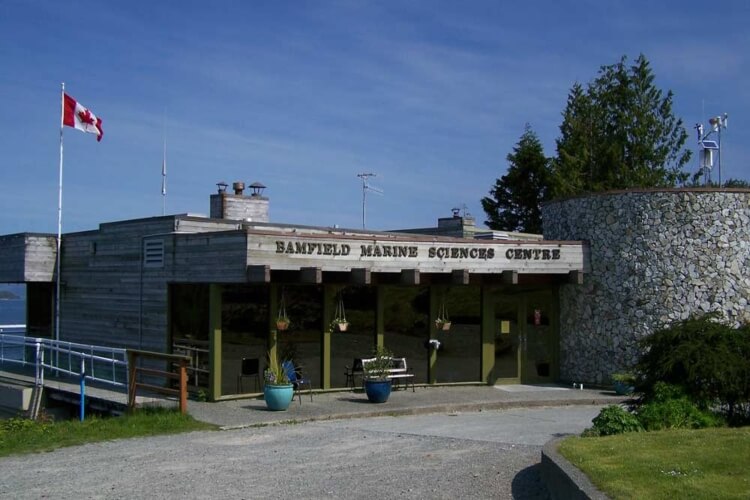 Top5
Top5On the morning of May 13, 2014, a diving team from the Marine Ecology Department at Simon Fraser University in British Columbia, Canada, prepared to head out into some pretty deep waters. You see, the team wanted to conduct a research dive to study the waters off the coast of Bamfield, near Vancouver Island.
While the dive team had initially planned to simply take some notes on oceanic wildlife, their goals that day quickly changed. As the team loaded up the boat and headed out onto the deep blue sea, they had no idea what the ocean depths had in store for them. To find out what happened, click “Next” below…
Sources: Explored Planet, Maternity Week, Tree Huger, Wikipedia.
Sponsored Links
 Explored Planet
Explored PlanetIn a desolate region of Arctic Circle, over 200 miles from the nearest city, stands the ruins of an abandoned Soviet research station. There, one can find an astonishing discovery: the deepest hole in the world. Over the past few decades, scientists have used the hole to try and accomplish the unthinkable: drill to the center of the Earth.
As the engineers worked, terrifying rumors began cropping up, like that the team discovered a portal to Hell itself! Soon enough, the team would make a startling discovery that would force the scientific team to shut down and seal the experiment forever!
What Lies Beneath
 Vasily Bogoyavlensky
Vasily BogoyavlenskySince the very beginnings of civilization, humans have been fascinated by what lies below the Earth’s surface. Some wondered if it contained monsters, forgotten people, or secret gateways to the underworld. Of course, these days, it just seems like everyone wants to get to Mars. But, as we continue to stare up at the night sky with wonder, many overlook the incredible, mysterious phenomena found right here at home, including the deepest hole in the world!
Believe it or not, some scientists believe that our knowledge of outer space is actually greater than our understanding of what hides beneath Earth’s surface. And while many know about the space race and our desire to colonize other planets, few remember the equally fascinating battle to conquer the subterranean world…
In The Barren North
 Maternity Week, Explored Planet
Maternity Week, Explored PlanetDuring the Cold War, many countries were trying to find a way to dig deep into the Earth. After all, hiding underground was the only viable way to survive a nuclear war! Not only that, but digging to the Earth’s center guaranteed new scientific discoveries and opportunities to those who could.
To keep their own project a secret, the Soviets needed to find an incredibly remote location. Eventually, they settled on the uninhabitable Kola Peninsula in the Arctic Circle. Not only was the location hundreds of miles from the nearest city, but the research team also found a deep, natural hole there. The hole would jump-start their dig! Amidst the ice, the group began plans to start the project, never knowing that they would soon make a discovery that would change the world forever…
What The Soviets Were Looking For
 History Channel, Wikimedia Commons
History Channel, Wikimedia CommonsToday, most believe what the history books say: the Russians started their project as a part of the scientific arms race of the Cold War. However, some think that there were other reasons Russia wanted to dig down to the center of the Earth.
Some historians maintain that the Soviets wanted to prove that the Earth was hollow, filled with monsters and forgotten civilizations. Others believe the rumors that Russia had developed secret plans to build a massive city underground. Regardless of why the Soviets started digging in the desolate Kola Peninsula, no one could have predicted what they would find underground…
The Dig Begins
 Explored Planet
Explored PlanetBefore reaching the core, the Soviets first aimed to reach a depth of at least 49,000 feet, far deeper than anyone had dug before. The dig began in earnest in 1965, by which time the team had named their project “The Kola Borehole.” Engineers use the term “borehole” for any type of exploratory hole drilled as part of a geological investigation. After the dig began, researchers started digging more boreholes, which forked off from the central vein.
This technique meant that the Russians had to move slowly through the digging process, as the side boreholes provided invaluable data and stabilized the central hole. As other countries stopped their deep hole digs, the Soviet Union soldiered on. And, soon enough, the Kola Borehole smashed a world record!
World Record Broken
 Maternity Week
Maternity WeekAfter years and years of digging, on June 6, 1979, one of the Kola Borehole’s side tunnels, one dubbed SG-3, broke the world record for the deepest artificial hole dug. Previously, the oil dig known as Berth Rogers Hole in Oklahoma held the record at 31,440 feet. However, on the day in 1979, the team in SG-3 dug to 31,441 feet beneath the Earth’s surface.
Believe it or not, this is just the beginning of the incredible tale of the Kola Borehole and the team behind it. Less than a decade after the Kola Borehole team broke the world record, in 1983, they had managed to dig to a depth of 39,000 feet! It was that this point that geological started to make unique, and dangerous, discoveries…
Boiling Mud
 Reddit
RedditOne day, as the Soviet Team continued to slowly dig further and further into the Earth, they began receiving strange readings from their equipment. As it turns out, mud had started to flood the hole. But not just any type of mud. Instead, mud quite literally “boiling” with hydrogen gas filled a portion of the hole, damaging some equipment. Thankfully, eventually, the mud dissipated.
To this day, scientists are still not entirely sure how hydrogen gas, one of the four essential elements of life, could get so deep underground. But that was still just the beginning of what the Soviet Union would discover inside the Kola Borehole! It was at this point that the Russian government realized they could make some money off the hole.
A Tourist Attraction
 Explored Planet
Explored PlanetBy the early 1980s, oil prices had started to drop, sending the Soviet Union’s economy into a tailspin. So, the government looked to make money any way they could. As a result, for a year, engineers stopped digging deeper into the hole. Instead, they opened it up both to scientists and tourists.
The Soviets had no problem with other scientists coming to the site, as they knew they were unlikely to discover anything they had not. Meanwhile, locals and tourists could pay to visit the site and learn about the extraordinary Kola Borehole from the people that worked there. Sadly, it failed to drum up much business. Ultimately, just a year later, the failing USSR restarted the experiment and began digging once again!
Competition Drives The Team Deeper
 GenK
GenKWhile it has never been confirmed, many believe that the Soviets restarted their dig for another reason: competition from Germany. You see, in the ’80s, the German government also decided to get in on the dig-as-deep-as-possible game. So, they launched the German Continental Deep Drilling Program (GCDDP), pouring more than $733 million in today’s money into digging the world’s deepest hole. That’s right!
So, what did it get them? Well, by the time Germany decided to defund the GCDDP, they had managed to dig just over 6 miles into the Earth’s crust, smashing the previously held record. How incredible! Sadly for them, the Russians would best their record in short time.
Disaster Strikes
 Maternity Week
Maternity WeekIn September 1984, the unthinkable happened. Drilling had resumed just a few days earlier, and everything went slow and steady, just as intended. However, just before hitting the 40,000-foot mark, a section of the drill string started to twist off. While the engineers tried to save it, it was too late. The drill fell off and was left in the hole. Due to the borehole’s size, the team could not retrieve the bit, blocking all future progress. For a time, it seemed the adventure into the Earth would not continue.
Thankfully, the Soviet team’s careful planning paid off. Thanks to their decision to make side boreholes, they managed to restart from another hole, 23,000 feet in depth. By 1989, they had once approached the 40,000-foot mark. While the mistake cost them five years, history would soon be theirs…
Cracking 40,000 Feet
 Explored Planet
Explored PlanetAt the end of 1989, the Soviet team at the Kola Borehole cracked open a bottle of champagne. The reason? By the end of that year, the drill team had managed to reach a record 40,230 feet. That’s right! The team had managed to drill 7.5 miles into the Earth. To put that into perspective, that’s 37.8 Eiffel Towers stacked on top of one another. They also renamed the Borehole to the Kola Superdeep Borehole, appropriately.
Encouraged by this incredible feat, higher-ups in the USSR felt optimistic about the project’s future, believing that the Kola Superdeep Borehole would reach its original target of 49,000 feet by the end of 1993. However, all those predictions would soon fly out the window. What the Soviet team found once they cracked 40,000 feet would upend the scientific community!
How Deep It Really Is
 Maternity Week
Maternity WeekIt’s quite challenging for a human to imagine just how far 40,230 feet is. Of course, we can give context, like 7.5 miles, 37.8 Eiffel Towers, 112 football fields, and the like, but the scale still seems impossible. Believe it or not, at this point, the Kola Superdeep Borehole had become deeper than any natural hole found on Earth. The deepest location on Earth, the southern end of the Mariana Trench, comes in at just 36,037 feet.
While the depth of the Kola Superdeep Borehole will always be a tad hard to grasp, this might help: if you were to fall the heigh of the Kola Borehole, it would take you four full minutes. That’s right!
Things Started To Heat Up
 Explored Planet
Explored PlanetThe first thing that scientists noticed after breaking 40,000 feet was that things started to heat up, literally and quickly. While the team had expected things to become hotter as they bore closer to the Earth’s core, the bottom of the hole reached a whopping 356 °F, a full 176 °F hotter than the engineers had calculated. That’s hot enough to liquefy nearly any creature instantly!
Soon, the Soviet team’s drills could barely handle the heat. However, surprisingly, it did not seem to affect the rock in the way it should have. The Russian geologists were about to have their fundamental understanding of the world shaken…
Moving Rock
 Maternity Week
Maternity WeekWhile the drastic increase in temperature certainly surprised the scientists, nothing could prepare them for what they would find next. The Soviet geologists also discovered that rock at depths past 40,000 feet was considerably less dense than they had original predicted. In fact, the high temperatures actually caused the rock to behave somewhat like a thick plastic.
In light of this discovery, the team would need to devise a new way to drill deeper towards their goal. But even as they waited, their findings were far from over! The scientists would find much more before their job was done. Meanwhile, strange rumors about the project began to crop up with the few locals that lived near the Kola Superdeep Borehole…
A Hole to Hell?
 Explored Planet
Explored PlanetAs soon as word of the temperature increase started to leak from the Kola Superdeep Borehole, rumors began to propagate all around Russia. Now, a common Russia legend holes that the team actually burst into a massive cave system after hitting 40,000 feet deep. In intrigued, the legend says that they lowered down a microphone and captured the unbelievable: the sounds of human screams and roaring flames.
Of course, the Russian government has, to this day, completely denied the story, labeling it as entirely false. However, that has not stopped many from believing it. While definitive proof of the story has never emerged, what the Soviet scientists discovered next should have put the rumors to bed for good…
Another Component For Life
 Maternity Week
Maternity WeekAmazingly, at these incredible depths, the team found flowing water, at depths that no scientist had ever predicted before. Of course, that makes it pretty hard for there to be flames and screaming people down there! But it did strike the scientists as incredibly strange: even at these incredible depths two of the four major components of life, water and hydrogen, existed.
Currently, scientists believe that the water comes from the intense pressure of planet Earth, forcing oxygen and hydrogen out of the rock, creating water. Even though many of the components of life were found at these depths, geologists and biologists never believed anything could live that far underground. At least not until the Soviet team’s next, and most important, discovery.
Life Found
 Explored Planet
Explored PlanetIf you think it’s impossible for something to live 40,000 feet under the Earth’s surface, think again. Believe it or not, at these incredible depths, the Kola Superdeep Borehole team found microscopic plankton fossils! Later, the team estimated that these creatures died nearly 2 billion years ago. So, while nothing might live down there now, it may have a long, long time ago!
You might also think, given everything discovered, the Soviet government would love the project. But following the discovery of the plankton fossils, the USSR ordered the Kola Superdeep Borehole project shutdown! It seems the team would never reach their goal of 49,000 feet. By 1995, everyone on the project had been assigned to other places or departments. However, soon enough, research began again and more secrets began rising to the surface…
Research Continues Today
 Explored Planet
Explored PlanetThanks to the exciting research done in the deepest parts of the Kola Superdeep Borehole, scientists late managed to disprove a long-held belief about the composition of the Earth’s crust. You see, for many years, by measuring seismic waves, most geologists predicted that the rock underneath our feet changes from granite to basalt somewhere around three miles beneath the surface.
However, by closely examining the data recovered by the Soviet team, scientists soon learned this was not the case. At least not underneath the Kola Peninsula! Once again, even after closing, the Kola Superdeep Borehole would have a massive impact on the geological world. And the surprising discoveries continue today!
Better Understanding the Earth
 Maternity Week
Maternity WeekTaking a close look at the data that the Soviet team pulled while deep underground, researchers realized that the group had found only granite, no basalt, even at the deepest points of the Kola Superdeep Borehole! While it would take a few more years of testing and research, the information kicked off a firestorm of scientific investigations.
Eventually, geologists worldwide concluded that the original idea on the change in seismic waves had been wrong. Rather than granite shifting to basalt, the change in seismic waves is actually a result of metamorphic differences in the rock! And this is just one of the many values of the Kola Superdeep Borehole to today’s scientific minds.
The Value of the Hole
 Explored Planet
Explored PlanetYou might think that since the Kola Superdeep Borehole is now closed that it’s worthless. However, that’s simply not true. The data the Soviet team pulled from the dig remains as valuable as ever.
As geologist Benjamin Andrews explained, “If we have a better knowledge of what the mantle is and how the mantle behaves, we have better knowledge of volcanoes and earthquakes, and better knowledge of how the planet as a whole works.” That’s why the hole in Kola remains so important, even today. So it probably comes as no surprise that the scientific community is divided about what to do with the superdeep hole now…
What To Do About The Kola Superdeep Borehole
 Maternity Week
Maternity WeekTwo things led Russia to shutdown the Kola Superdeep Borehole in 1992. First, the high temperatures and strange, unpredictable rock made all drilling equipment at that time useless. No matter what they tried, the team’s equipment could not survive under the conditions. With that information, the higher-ups decide to shut down the mission.
Meanwhile, as many historians have pointed out, the Kola Superdeep Borehole’s closure nearly perfectly times with the fall of the Soviet Union. However, the USSR had one final project for the team behind the world’s deepest hole…
The Site Today
 Maternity Week
Maternity WeekSadly, after the Russian government shut down the project, they made sure to ruin any other scientists’ chance at collecting new information. The dissolving USSR ordered the Kola Superdeep Borehole partially filled with cement and sealed it with a tight metal lid. They also flagged the site as an environmental hazard and made it illegal to visit. Should you ever find yourself in the remote area of the Kola Peninsula, it’s best to follow local laws and stay away.
While the Superdeep Borehole was once the deepest manmade hole globally, its record has since been broken! In fact, one record-breaker eventually reached the original goal of the Soviet team: 49,000 feet deep…
Record Broken
 Wikimedia Commons
Wikimedia CommonsFor nearly 20 years, the Kola Superdeep Borehole’s record dig went unbroken. However, as always, things eventually changed. In 1994, Maersk Oil Qatar AS of Denmark started digging in the Al Shaheen Oil Field in the Persian Gulf. Of course, at the time, they had no idea they would eventually dig the deepest well – or anything, for that matter – ever.
Then, in May 2008, Maersk Oil drilled the world record for a well. The company managed to drill the well, incident-free, to a new world record of 40,320 ft, 90 feet more than the Kola team. Still, the Maersk Oilwell has provided us with little geological information. And, soon enough, it would be beaten once again. This time by a Russian team, no less!
Smashed Once Again
 Wikimedia Commons
Wikimedia CommonsEventually, a Russian team would manage to dig their way down to 49,000 feet, though it wasn’t the Kola Superdeep Borehole team, of course. In 1996, the Russian Federation and the Sakhalin government started a joint oil consortium off of Russia, run operated by Exxon Neftegas Limited. Since the first well was dug in 2003, 10 record-breaking wells have been drilled in this area.
Most recently, in November 2017, a new well in the area broke the old record, coming in at 49,000 feet. Finally, it had been done, some seven decades after the Soviet Union put forth their initial goal. But scientists still have a long way to go…
Long Way To Go
 Materinty Week
Materinty WeekSure, the Kola Superdeep Borehole and the record-breaking wells seem deep – and they are. We’ve already covered just how deep they are! However, to put things in perspective, even though these are incredibly deep holes, they barely scratch the surface of the Earth’s incredible mass.
For those that don’t know, the average distance to the center of the Earth is a whopping 3,959 miles. That’s right! That means even the deepest well, which comes in at just 9.2 miles, has only made it .002% the way to the center of the Earth. But, while scientists don’t expect to dig to the center of the Earth anytime soon, they are still trying to go deeper!
Digging Deeper Than The Kola Superdeep Borehole
 Explored Planet
Explored PlanetAs many of the deepest holes in the world are oil wells, and therefore give scientists little to no data about the Earth, many are trying to start another project like the Kola Superdeep Borehole. After all, there’s still so much to learn right here on Earth!
Any geologist can tell you: it’s much easier to drill down into certain parts of the planet than others. For instance, the floor under the ocean is not only already deeper than land, but also often much less dense. That’s why so many oil companies drill in the sea! So why not drill under the ocean? Well, that’s exactly what some scientists are thinking.
Drilling Under The Ocean
 Materinty Week
Materinty WeekIn 2016, the Woods Hole Oceanographic Institution, a private, nonprofit research institute in Massachusetts, announced plans to begin drilling to depths never even dreamed of by the Soviet Union. Their dig is taking place in the Atlantis Bank of the Indian Ocean. There, the team located a piece of oceanic that cooler than usual, making things even easier for engineers.
The Woods Hole team plans to drill to the Moho, where the Earth’s crust ends, and the molten mantle begins. “Atlantis Bank makes an ideal target to try to drill to the Moho, the boundary between Earth’s crust and mantle, because there are no upper-crust basalts and dikes to drill through,” the Institute wrote.
The Search Continues
 Explored Planet
Explored PlanetToday, the Woods Hole Oceanographic Institution project has been going on for some time. Scientists from various organizations have helped, and the team has stopped and restarted a few times. However, they all remain hopeful that they will find something incredible soon enough and break the world record for the deepest man-dug hole. Only time will tell!
The world waits as well to see what they discover. Who knows, maybe they’ll one day find living creatures down there! Of course, deep underneath the Earth’s surface is not the only place to find amazing discoveries. Just dive beneath the waves of the ocean, and you’re sure to find something incredible, like the dive team from one Canadian college…
Lying On The Bottom of the Ocean
 Top5
Top5Losing something incredibly meaningful and important, like a camera or photo album, can feel devastating. Most of the time, there’s no other option than to move on. However, once in a blue moon, a long lost item makes its way home under the strangest of circumstances. This is one of those stories.
When conducting research, divers from a Canadian university discovered a long lost camera on the seafloor. From the looks of it, it had remained there for years, if not decades. While it was strange enough to find a camera on the bottom, the divers never thought it would work. But, believe it or not, it turned on! And they could not believe the photos they found…
A Diving Expedition

Sponsored Links
On the morning of May 13, 2014, a diving team from the Marine Ecology Department at Simon Fraser University in British Columbia, Canada, prepared to head out into some pretty deep waters. You see, the team wanted to conduct a research dive to study the waters off the coast of Bamfield, near Vancouver Island.
While the dive team had initially planned to simply take some notes on oceanic wildlife, their goals that day quickly changed. As the team loaded up the boat and headed out onto the deep blue sea, they had no idea what the ocean depths had in store for them. To find out what happened, click “Next” below…
Sources: Explored Planet, Maternity Week, Tree Huger, Wikipedia.

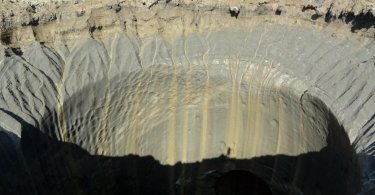

Comments